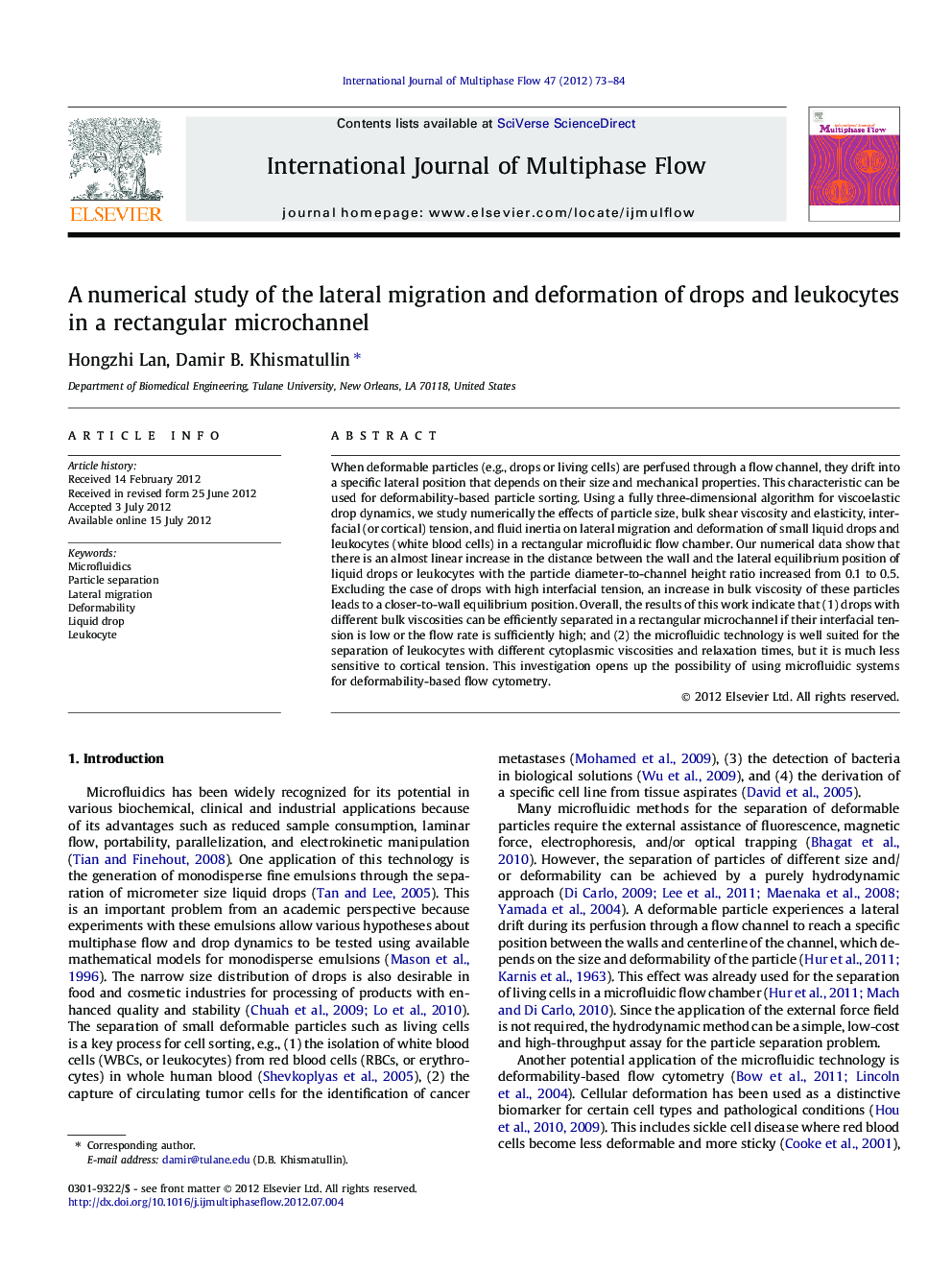| Article ID | Journal | Published Year | Pages | File Type |
|---|---|---|---|---|
| 667733 | International Journal of Multiphase Flow | 2012 | 12 Pages |
When deformable particles (e.g., drops or living cells) are perfused through a flow channel, they drift into a specific lateral position that depends on their size and mechanical properties. This characteristic can be used for deformability-based particle sorting. Using a fully three-dimensional algorithm for viscoelastic drop dynamics, we study numerically the effects of particle size, bulk shear viscosity and elasticity, interfacial (or cortical) tension, and fluid inertia on lateral migration and deformation of small liquid drops and leukocytes (white blood cells) in a rectangular microfluidic flow chamber. Our numerical data show that there is an almost linear increase in the distance between the wall and the lateral equilibrium position of liquid drops or leukocytes with the particle diameter-to-channel height ratio increased from 0.1 to 0.5. Excluding the case of drops with high interfacial tension, an increase in bulk viscosity of these particles leads to a closer-to-wall equilibrium position. Overall, the results of this work indicate that (1) drops with different bulk viscosities can be efficiently separated in a rectangular microchannel if their interfacial tension is low or the flow rate is sufficiently high; and (2) the microfluidic technology is well suited for the separation of leukocytes with different cytoplasmic viscosities and relaxation times, but it is much less sensitive to cortical tension. This investigation opens up the possibility of using microfluidic systems for deformability-based flow cytometry.
► Low interfacial tension is required for viscosity-based separation of liquid drops. ► Bulk viscoelasticity of living cells can be estimated from their lateral position. ► Inertial microfluidics is an efficient tool for deformability-based cell sorting.
